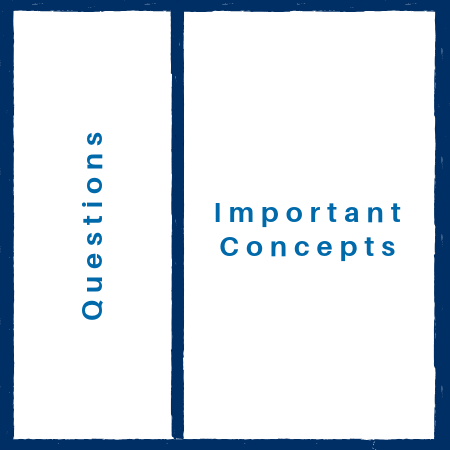Check out these tips to create a study guide that will give you a deeper, more meaningful understanding of the material on your next exam.
Creating a study guide is one of the best ways to prepare for an exam and improve your test results. In fact, a study by Stanford researchers found that applying a strategic approach to studying helped college students improve their exam scores by an average of one-third of a letter grade.
Your study guide is more than just a collection of your notes from class. It’s a personal study tool, customized to fit your unique learning style and studying routine.
Check out these tips to create a study guide that will give you a deeper, more meaningful understanding of the material on your next exam.
1. Start by organizing your notes
You’ll want to organize the information in your study guide in a way that makes sense to you. The most common type of study guide is called a “summary sheet.” To create a summary sheet, you will organize your notes conceptually.
- Step 1: Divide your paper into two columns, with the right column having significantly more space than the left column.
- Step 2: On the right side of your paper, list the most important concepts or terms from each chapter or lesson that will be covered on the test. Underneath each item, provide a summary or description. You can also include examples from the text that will help you remember the material.
- Step 3: On the left side of your paper, write cue questions that correspond to the information on the right. Then, cover up the right side of the paper and see if you can answer the questions on the left.

The summary sheet method forces you to review your notes as you transcribe them into your study guide, making it more likely that you’ll remember the information later. By quizzing yourself on the questions in the left column, you can determine which concepts and terms you need to review further.
There are several other ways to organize a study guide and the best method will depend on the content you’re studying. For example, if you’re creating a study guide for an upcoming history exam, ordering your notes chronologically and creating a timeline of events will help you understand the historical context behind the information.
These study guides look similar to notes taken using the Cornell method.
2. Practice essay questions
You can prepare yourself for possible essay questions by practicing answers to them beforehand. That way, in case a similar question comes up on the exam, you’ll have a well thought-out answer ready to go. You can try to anticipate what these questions might be using past exams or quizzes, or you can copy the review questions from the textbook, which are often at the end of every chapter. While memorizing the material is one benefit of using a study guide, practicing essay questions will help you make sure you can apply your knowledge in a written response.
3. Make a vocabulary section
If there is a vocabulary section on the exam, dedicate a portion of your study guide to key terms and definitions. Even if there’s not a vocabulary section on the exam, it’s still important to know key terms for when they appear in the context of a question. Knowing your vocabulary will help you feel more comfortable using important terms in your essay responses, which shows your instructor that you have a strong grasp on the exam material.
Concept maps are a great way to study vocabulary, especially if you are a visual learner. To create a concept map, draw a shape around key terms and then draw lines to establish its relationship with other words or concepts.

Visual example would be good here Visually mapping out the relationships between different vocabulary words not only helps you remember definitions, it also helps you establish important connections between key terms and concepts.
4. Handwrite it – don’t type it
It may not seem like a big deal, but it’s critical that you handwrite your study guide as opposed to creating it on a computer. While it’s often easier and faster to type something up, writing by hand requires you to slow down and think about the information you are transcribing. This gives you the added benefit of actually absorbing the information you need to study while you are in the process of creating your guide. If you do need to type out your study guide for whatever reason, it’s recommended that you print it out after you are finished. Reading a document on your computer screen won’t help you retain information and you’ll be prone to more distractions from the internet, such as social media notifications or emails.
5. Make it personal
One of the biggest benefits of creating your own study guide is that you can tailor it to fit your learning style. Most people fall within five different types of leaning styles: visual, auditory, reading/writing and kinesthetic. As a result, two students studying for the same test might have very different study guides.
As an example, reading/writing learners may benefit from creating a more traditional study guide, such as the summary sheet, and repeatedly rewriting the material. Visual learners will benefit more from color-coding and creating concept maps in order to create meaningful connections between key concepts.
Studying for exams can seem intimidating, but with the right approach, you can increase your chances of success. Creating a personalized study guide will help you review the information in a way that is most helpful to you and can help you improve your test scores as a result.










